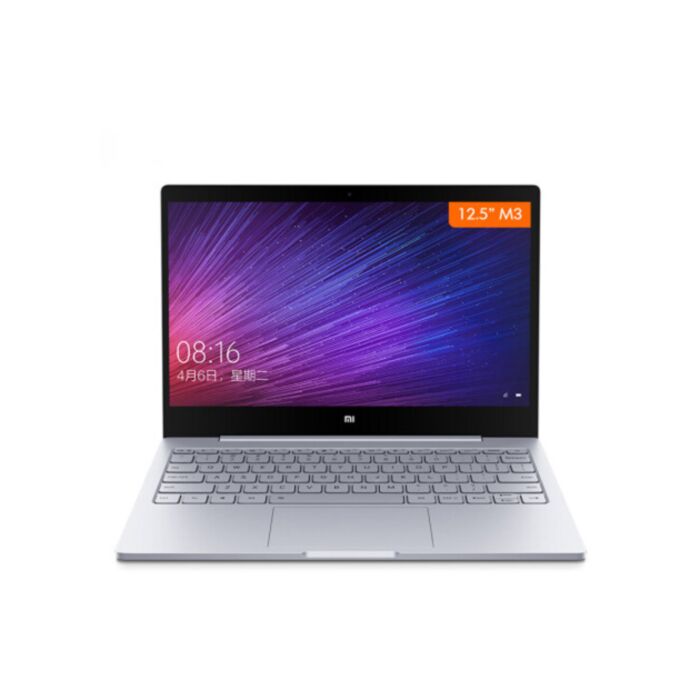

- #Xiaomi notebook air 2 full
- #Xiaomi notebook air 2 windows 10
- #Xiaomi notebook air 2 pro
- #Xiaomi notebook air 2 Bluetooth
The Lenovo IdeaPad 530S comes very close to the Mi Laptop Air, at least on paper. At just under £629 (around $820) at the time of writing, it is a better deal if you don’t need graphical grunt. You do get a touchscreen display, a convertible form factor, a card reader, a localized keyboard, a bigger battery and an optional 3-year care pack with pickup and return service. The HP Pavilion x360 14-cd0008na comes with the same CPU and a similar feature set minus the dedicated graphics card. The international version of this laptop has yet to be sold outside of China at the time of writing, so we have to rely on the pricing of the likes of Gearbest where the laptop is on sale for $760 before any taxes that may be levied by HMRC or the courier companies on behalf of the vendor. Last year’s complaint about a noisy fan no longer holds as the device was relatively quiet during our benchmarks, only briefly firing up under taxing loads, partly due to a much lower CPU base clock speed and an upgraded cooling system.īattery life is below average at 4 hours 15 minutes, which is barely acceptable even for a laptop with a dedicated GPU – and notably less than half the 9.5 hours claimed by Xiaomi. However, the glossy finish makes it near impossible to read in bright sunlight, which is a shame.
#Xiaomi notebook air 2 full
The 13.3-inch Full HD IPS display is protected by glass made of sapphire and delivers bright, crisp pictures with good viewing angles and decent saturation levels. Where the 2018 edition shone was in multi-core tests where the four cores delivered some cracking scores. Single-core performance was roughly on par with last year’s laptop which contains a 7th-generation Intel CPU with a much higher base frequency.
#Xiaomi notebook air 2 windows 10
This is the international version of the Xiaomi laptop which means that it has a proper international Windows 10 Home edition, which received relevant system and security updates without issues. Windows Experience Index: 5.6 Usage and performance Here’s how the Xiaomi Mi Laptop Air 13.3 performed in our suite of benchmark tests:ĬPU-Z: 389 (single-thread) 1943 (multi-thread) Performance can be boosted by adding another memory module to enable dual-channel bandwidth gains. Note that there are two memory slots, one of which is populated by a lonely memory module. Another option might have been to use the Ryzen 5 2500U with Vega 8 graphics, which other laptops like the Honor MagicBook have adopted, although you’d lose the extra dedicated 2GB GDDR5 memory. The GeForce MX150 GPU is still there largely due to the fact that Nvidia hasn’t released a successor. The PM961 NVMe SSD is still rapid enough for most tasks and even though it has been succeeded by the PM981, the differences between the two remain negligible (except in terms of random write speeds). The other main difference is the use of the newer Core i5-8250U processor which was announced last year, and has now been superseded by the 8265U which doesn’t bring much to the table other than a higher maximum turbo frequency.įor the rest of the spec, the key components (memory, communications, graphics and system storage) remain the same. The aforementioned drop in weight compared to the predecessor model might be down to the fact that the battery used here is a tiny bit smaller (37Whr as opposed to 39.2Whr).
#Xiaomi notebook air 2 Bluetooth
Ports: 2 x USB 3.0, 1 x USB Type-C, audio jack, HDMIĬonnectivity: 802.11ac Wi-Fi, Bluetooth 4.2 Graphics: Nvidia GeForce MX150 Intel UHD Graphics 620
#Xiaomi notebook air 2 pro
Here is the Xiaomi Mi Laptop Air 13.3 configuration sent to TechRadar Pro for review:ĬPU: Intel Core i5-8250U quad-core 1.6GHz


 0 kommentar(er)
0 kommentar(er)
